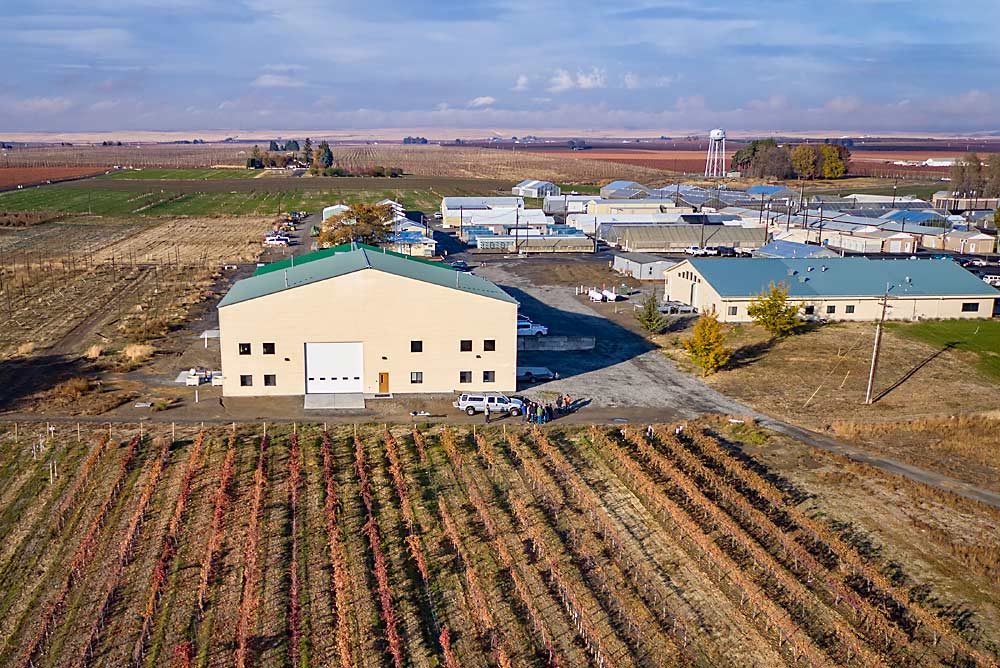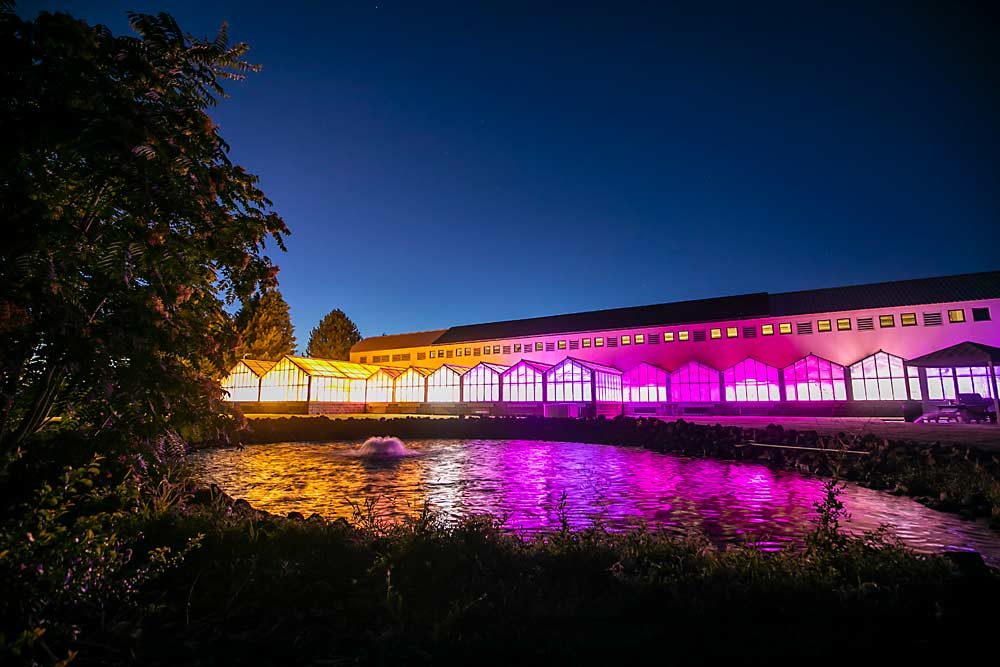For 100 years, scientists stationed in Washington’s Yakima Valley have worked to solve problems faced by the region’s farmers. This fall, two institutions instrumental to innovations in agriculture will celebrate their centennial: Washington State University’s Irrigated Agriculture Research and Extension Center in Prosser and the U.S. Department of Agriculture’s Yakima Agricultural Research Laboratory.
Both made plans to embrace the opportunity to share successes and the need for ongoing support to maintain facilities, staff and high-level research that supports the region’s ag economy.
At IAREC, WSU’s largest and most diverse research and extension center, two celebrations are planned for this month: one, an invitation-only event for university leaders and industry stakeholders, and second, a community celebration on Saturday, Oct. 5, with kid-friendly science experiments, food and scientists in a dunk tank.
The ARS lab plans to host an open-house-style event this fall, after harvest, but details were not yet available at press time.

IAREC community celebration
Saturday, Oct. 5, 11 a.m. to 3 p.m.
24106 N. Bunn Road, Prosser WA
IAREC
Washington State University scientists have been stationed in Prosser longer than WSU has been a university. The center started with animal science, then added agronomy and diversified to follow the Yakima Valley’s transforming agriculture.
But over the years, IAREC has also led the industry in new directions.
“The Washington wine industry started here with Walter Clore. That research gave the foundation and convinced the growers to pursue it,” said Naidu Rayapati, the center’s director. Rainier cherries were bred at IAREC, another industry-transforming innovation.
Today, 19 faculty scientists call the center home, along with eight affiliated state and federal researchers; 25 researchers, from postdocs to interns; dozens of farm and administrative staffers; and a record-setting 51 graduate students.
“When I started here in 2004, we never imagined this could become a central location for training the next generation of scientists,” Rayapati said. But thanks to innovations in communication technology over the past decade, graduate students can now take classes remotely and be engaged in the research aspects from the start, rather than putting in four semesters of coursework at the main campus in Pullman before embarking on research.
At IAREC, students have the opportunity to work directly with industry stakeholders as well, experience that benefits them in their research and on the job, once they graduate, he said.
An increasing number of graduate students has also meant more research projects and more opportunities to partner with collaborating researchers around the world. IAREC may have started as a small research hub in a quiet farming community, but “now it’s a globally recognized research station,” Rayapati said.
Last year, faculty brought in more than $10 million in research grants, about a quarter of the entire amount for WSU’s College of Agricultural, Human, and Natural Resource Sciences.
Faculty come from seven different CAHNRS departments — agriculture, engineering, soils, entomology, horticulture, food safety and plant pathology — and that diversity of research interests is what gives IAREC its strength, Rayapati said.
“Bringing them together to solve complex problems across different crops is the successful foundation of this facility,” he said. “That’s the beauty of this location. We can’t work in silos.”

ARS-Yakima Laboratory
In 1919, the first U.S. Department of Agriculture scientists were sent to Yakima, with a focus on figuring out how to control codling moth. That’s still a top priority for entomologists there today, along with other pests of tree fruit and potatoes.
Today, the Agricultural Research Service lab is home to eight research scientists, about 60 total employees, and millions of insects reared for research trials.
As federal scientists, the goal is to take on the long-term, high-risk research agriculture needs, said director Lisa Neven, often in partnership with land grant university researchers and extension staff.
“We can develop a technology and then WSU is able to hand it over and show the farmers how to use it,” Neven said. “Our reward is helping our neighbors solve problems.”
Working in partnership with university researchers — in fact, several ARS scientists are stationed at IAREC — has been especially crucial in recent years, as federal shutdowns and hiring freezes limited ARS’ abilities, Neven said.
“If it hadn’t been for WSU, Oregon State and the University of Idaho, we wouldn’t have survived,” she said.
Partnership is the literal foundation of the lab, which sits on land in Wapato donated by the Washington Tree Fruit Research Commission. The lab also operates a 360-acre research farm in Moxee, Washington, far from commercial tree fruit and potato operations, which was previously owned by both WSU and the state Department of Agriculture.
“It’s a nice isolated place to do work and not worry about being bad neighbors,” Neven said. It’s expensive to operate the farm, but she puts the value of the research done there at $6 million so far. Across the board, the lab averages about $100 of value for each dollar spent on projects, she said.
ARS aims to give public service scientists the space and resources they need to be creative and solve problems, Neven said. Resources are increasingly limited, however, as federal appropriations fail to keep pace with operating costs, and she fears she may not be able to replace all the positions vacated by recent retirements and the unexpected death of a researcher.
That’s hard, because it’s the people who make the place successful, she said.
“I’ve got such wonderful people working here, there’s not a superlative to describe them,” she said. •
—by Kate Prengaman






Leave A Comment